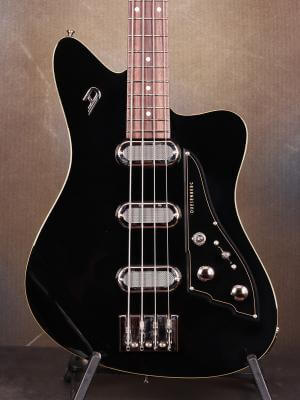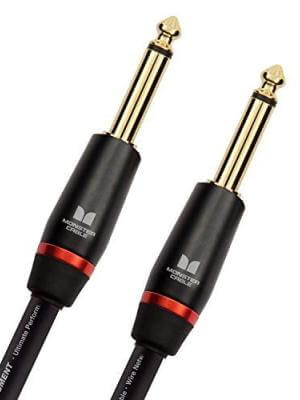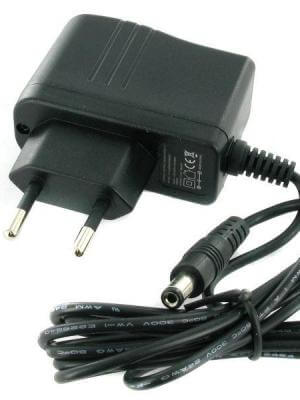Product Overview
Ship worldwide
2 year warranty
DSM Humboldt Simplifier Bass Amp and Cab simulator
Technical Specs
Current consumption: 50mA to 100mA (if Headphone out is used)
Supply voltage: 9V - 12V
Polarity: Center negative
Input impedance: 1 Meg Ohm
TRS output impedance: 100 Ohm
DI Output impedance: 120 Ohm
Send output impedance 100 Ohm
Return Input Impedance: 1 Meg ohm
Headphone Power : 120mW @ 32 Ohm
Dimensions
Width : 115 mm (4.53 in) /
Height: 65 mm (2.55 in)
Depth: 55 mm (2.16 in)
Weight: 430 g (0.94 lb)
Controls and Switches
Preamp Section
Gain: Sets the gain of the preamp. It will produce a sweet SVT overdrive if set above 70%.
Level: Sets the preamp master volume level.
Mid Select: Selects between 400Hz, 900Hz or 1500Hz for the mid control.
High: Controls the high frequency band, +- 15dB @ 3.5kHz , shelving.
Mids: Controls the mid band, -+ 15dB, bandpass, frequency according to the mid freq switch.
Lows: Controls the low end frequencies, +- 15dB @ 80Hz, shelving.
Blend Section
After the preamp, the signal from the parallel signal chain (which bypasses the preamp and has
its own fx loop) can be blended back into the main signal. Also, the Cabinet Simulation can be
blended in or out, for different textures and low end responses.
Preamp Blend: Blends the preamp signal and the parallel signal into the main signal. Start with
this control at 100% and then blend in the parallel signal until you get the desired mix.
Cabsim Blend: Blends the Cabsim in and out of the main signal.
Parallel LPF: 3 way toggle switch that enables a 2-pole LPF affecting the parallel signal.
response of classic tube types:
100Hz: Deep low end preserved, and any harmonic content is filtered out.
OFF: LPF disabled.
500Hz: Deep low end, and low-mids preserved in the parallel signal chain.
Cabsim
MIC POSITION: Controls that responds like a real CENTER/OFF AXIS microphone
position adjusting the precise amount of high-end roll off you look for. As usual with real mics
and speakers, placing the MIC outside the center works best for distorted tones, and cleans
sound best near the center.
Cab Size Switch
4x10 Vented: A modern standard with extended flat low end response and bright drivers.
8x10 Sealed : Huge sounding resonant low end cabinet with modern speakers.
1x15 Vented : Warm and well rounded, with extended low end, but the highs are
creamier and less piercing.
Speaker color Switch
Bright: Aluminum cone speakers with their particular mid high bite.
Modern: Flatter response with extra highs and lows
Warm: Vintage speaker with clearer mid response and smoother highs.
Other Switches and Controls
PHASE CONTROL: Some pedals invert the phase of the signal, this causes signal cancellation
on certain frequencies, or even total cancellation if the preamp is flat and the parallel-preamp
blend is 50%. Adjust if necessary.
GND LIFT: Disconnects the ground connection from the XLR out. Use in case you are getting
hum problems when connecting to an external device.
Headphone Level: Controls the volume on the headphone output.
Active/passive: Adjust this if you have a very hot bass and need to lower the gain (active), or
compensate for a low level bass signal with a slight 6dB boost (Passive).
Headphone Level: Controls the volume on the headphone output.
Connections
-Input Jack: Connect the bass here.
-Parallel FX Send: The parallel fx send output comes from the input, before the preamp.
Put the effects you want to use with the “clean” signal chain here.
-Parallel FX Return: Return from the “clean” signal chain effects.
-Preamp FX Send: The preamp FX send comes after the preamp. Put the effects for the
preamp side chain here.
-Preamp FX Return: Return from the “preamp” signal chain effects.
-TRS Out: Carries the main output (preamp + parallel blend) or the input signal (bypass),
if selected.
-DI OUT: Carries the Main output (preamp + parallel blend) in a balanced signal.
-DI PARALLEL: Carries only the parallel signal chain (including the fx loop and LPF)
-Aux In: The auxiliary input receives a signal from an mp3 player, phone, or any audio
device, and sends the signal in stereo to the headphone out. The aux signal will not
sound through the regular outputs. Perfect for monitoring or late night practice.
-Headphone out: Connect your headphones here.
The Power supply specs should be
- 9V to 12V DC voltage
- Regulated (designed for low noise, musical instruments use)
- 80 mA minimum current rating. You can use higher current rating supplies.
- Center negative.
* DO NOT USE CENTER POSITIVE SUPPLIES, IT MAY DAMAGE THE UNIT AND IT WILL NOT BE COVERED BY WARRANTY. PLEASE MAKE SURE THE POLARITY IS CORRECT BEFORE POWERING UP.
















